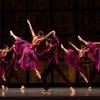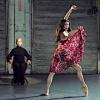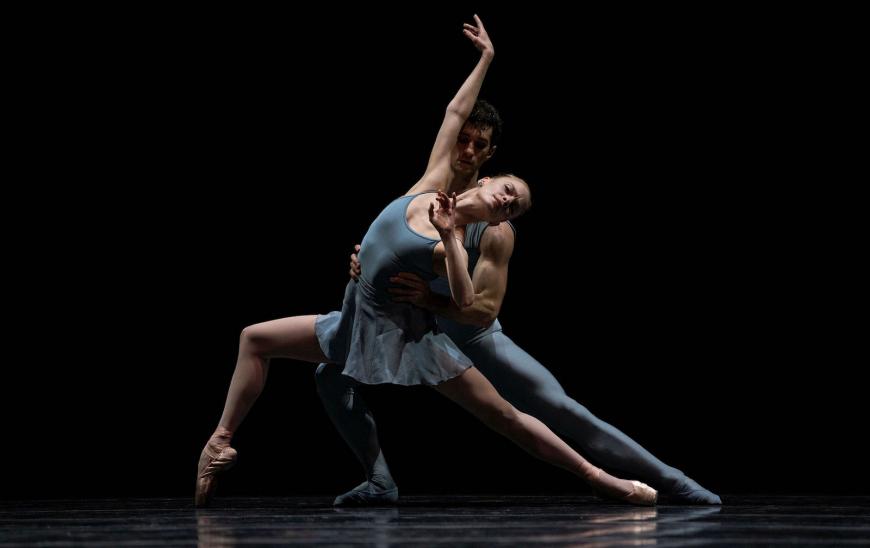
William Forsythe, whose career began as a dancer in the Joffrey Ballet and who’s been a choreographer for more than 40 years — about as long as your scribe has been making dance reviews — was from the get-go about the new and the postmodern. His stunning dancers were on pointe and also frequently on a tear, and the electronic music, often by Thom Willems, set a ripping, percussive pace, notes scraping chummily against each other. His ballets, taut masterpieces of surprise, embodied a sense of excitement.
Forsythe hasn’t made a piece for San Francisco Ballet since The Vertiginous Thrill of Exactitude, and his life in Germany, as artistic director of Stuttgart and then the Frankfurt Ballet and other German troupes, has limited his time in the States.
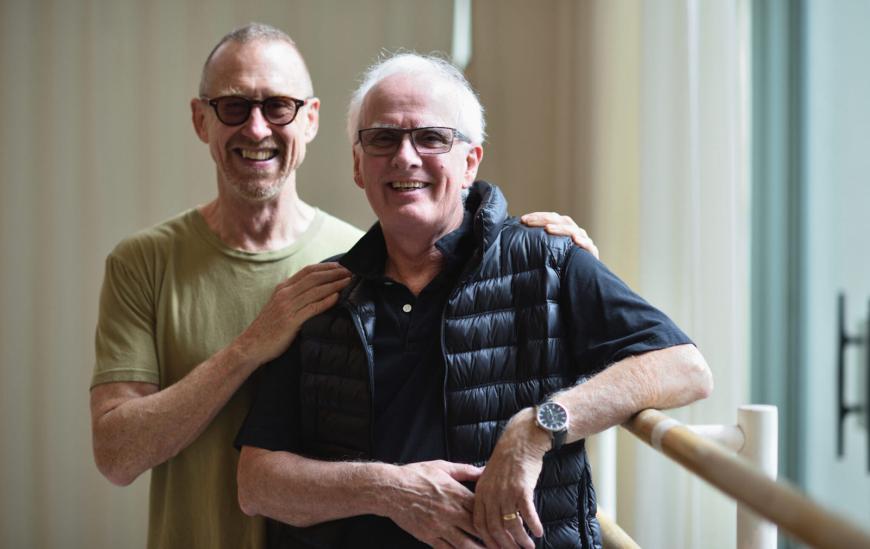
He’s back with Blake Works I, a company-size, plotless ballet set to music by the British rap artist James Blake that is a huge change from earlier Forsythe — and yet not. The choreographer whose earlier work always felt like an adventurous head-on encounter with the unknown is still dealing with it, but in a gentler way. Blake’s music has elements of Willems’s but the rhythm, the beat (influenced by dubstep) and the repetitiveness of music — and lyrics, which I can’t recall in previous Forsythe ballets — is more like a mantra than like a call to action. It’s quite soothing, in its own electronic way. Of the collection of seven songs from Blake’s The Colour in Anything, only one felt hard-charging. Not that there isn’t action. There’s plenty, but it’s smoother and more various in moods and imagery.
The ballet opens with the corps arrayed across the stage in powder-blue costumes (pleated tennis-style dresses and pointe shoes for the women, tights and tops for the men) against a plain dark backdrop, running through a variety of center-floor movements, but not in unison. There’s a tendu here, a plie there, little jetes, steps from side to side, forward and back. People also gather in groups, doing small movements among themselves as if in conversations. This went on for a while, a slice of everyday life in all its variety, camaraderie and ordinariness. As the songs went on, the movement got more complex, juicy, vital — bigger leaps, more partnering in duos and trios, underlying flirtations told through juts of the hip, joyfully insouciant and wry gestures, buoyant optimism in the wonderful patterns of beating jumps. But it also would return to a sense of overriding calm.
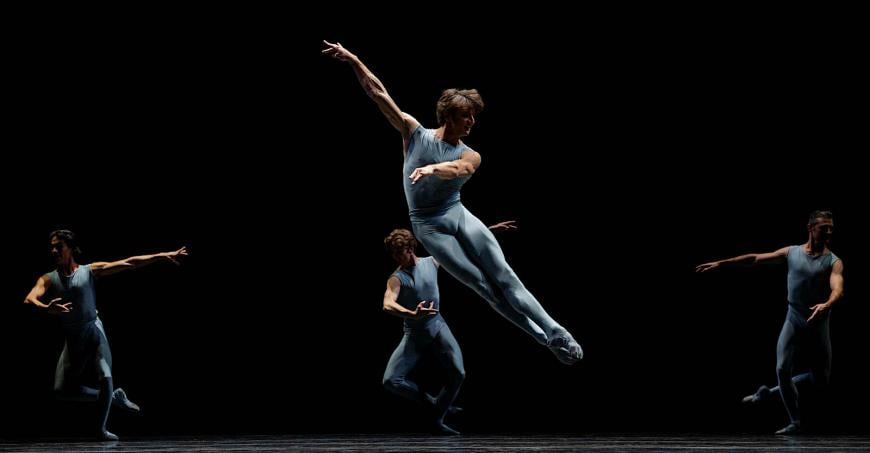
The ballet premiered in Paris in 2016, long before the uncertainties of COVID and what seem to be increasing world tensions. But watching it Tuesday night at the Opera House, it was as if the cast on the stage was a world full of young people in the grips — some gentle, some harsh — of the unknowable, going ahead with their lives and exercising agency and commentary when it was possible to do so. The overriding feeling was calm in the face of inevitability.
Ayman Harper, who danced with Forsythe’s former company as well as Frankfurt, staged Blake last year for San Francisco Ballet and noted that Forsythe, unlike many choreographers, allows his dances to be changed and interpreted within the choreographic framework. One wonders whether COVID restrictions during rehearsals lent themselves to any expression within the dance, just as one wonders what the long-term aftereffects of the pandemic will be on the young — not to mention the rest of us.
Blake Works I was thoroughly absorbing and bears repeat viewing for its density and the pure beauty of the company’s interaction with the work of a master choreographer. In addition, there were fine principal performances from Wona Park, Julia Rowe, Dores Andre, Wei Wang, Joseph Walsh, Angelo Greco and Esteban Hernandez.
Artistic Director Helgi Tomasson’s Caprice (2014), set to Camille Saint-Saens, was highlighted by the second-movement pas de deux, a meltingly lovely and frequently airborne journey for Yuan Yuan Tan and Luke Ingham.
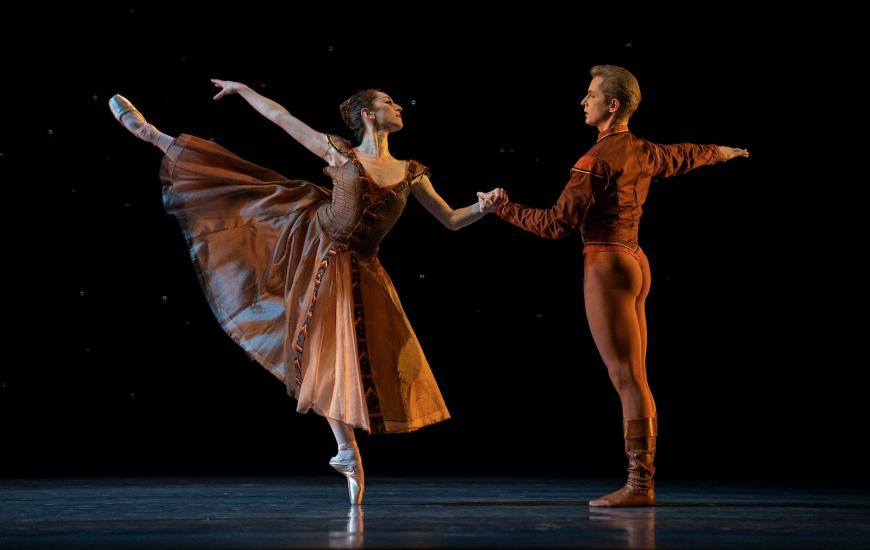
Jerome Robbins’s 1970 In the Night, a marvelous exploration of the lives and loves of three couples, set to Chopin (played beautifully by pianist Mungunchimeg Buriad), has been away too long. The cast of couples — Mathilde Froustey and Benjamin Freemantle, Jennifer Stahl and Tiit Helimets, and Sarah Van Patten and Ulrik Birkkjaer —made great amends.
Froustey and Freemantle, the young and impetuous lovebirds, contrasted mightily with Stahl and Helimets, whose marriage has congealed into mutual accommodation. And when it comes to Van Patten and Birkkjaer, fuhgeddaboudit. They’re on the brink of blows. Robbins’s genius for expression (it came with his personal volatility) gets free reign here, and mercurial moments for each duo remain in the memory long after the curtain has dropped on their meeting as a sextet, waltzing—well, almost as if nothing at all has happened.
Martin West conducted.


